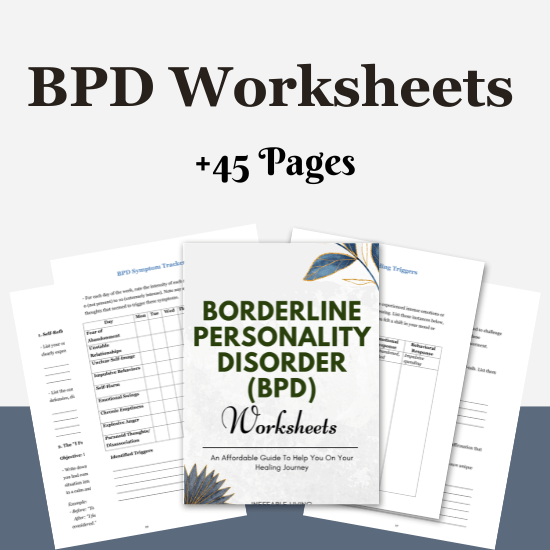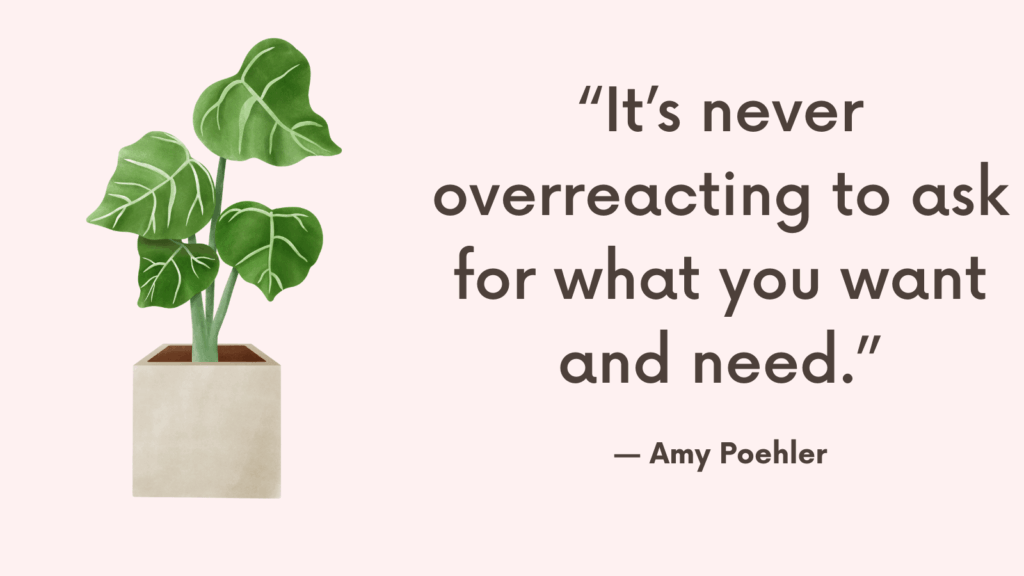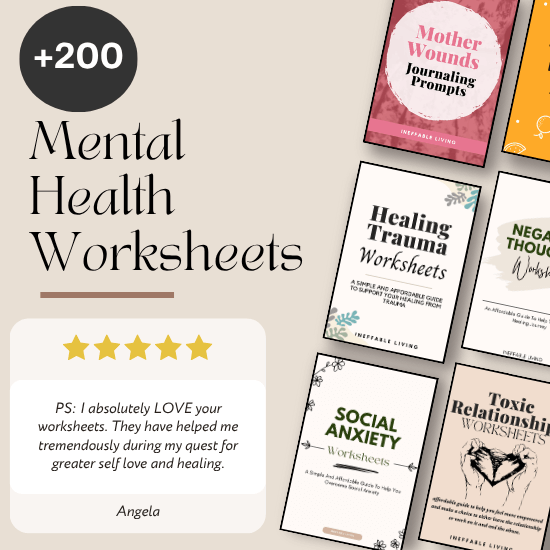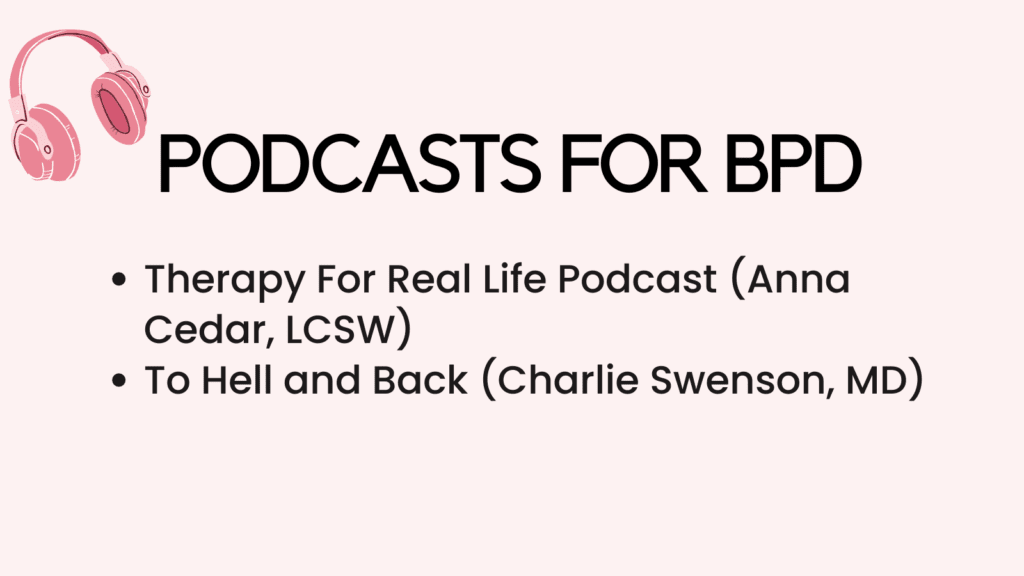One of the most intense and painful parts of living with Borderline Personality Disorder (BPD) is the constant, gnawing fear of rejection. It can make relationships feel like walking a tightrope — always waiting for the moment someone will leave, change, or withdraw. And even the possibility of disconnection can trigger panic, anger, or shutdown.
This fear isn’t irrational. It’s rooted in real emotional wounds. But the good news is — with the right tools and self-awareness — you can begin to build emotional safety, both within yourself and in your relationships.
What the Fear of Rejection Feels Like in BPD
- Sudden panic that someone is pulling away
- Intense thoughts like “They don’t care,” “They’re done with me,” or “I’m too much”
- Desperate need for reassurance — followed by shame for needing it
- Overanalyzing every word, tone, silence, or delay
- Shifting quickly from idealizing to devaluing others
- Physical sensations: chest tightness, nausea, trembling
Even small changes in a relationship can feel like abandonment, because the brain interprets emotional distance as danger.
Why the Fear Feels So Intense
For many with BPD, emotional needs weren’t consistently met in childhood. You may have learned:
- Love could be withdrawn without warning
- Your emotions were “too much” or wrong
- If someone pulled away, it was your fault
- Being vulnerable meant being hurt
So now, the possibility of rejection reactivates that early wound — and your nervous system responds as if your survival is at stake.
Related: Top 7 Skills For Coping With BPD [+ BPD FREE Resources]
BPD and Fear of Rejection: How to Build Emotional Safety?
1. Understand Where the Fear Comes From
Fear of rejection in BPD is often rooted in early attachment wounds — where love was inconsistent, conditional, or withdrawn during times of need. Over time, this teaches your nervous system:
- “If I get too close, I’ll be hurt.”
- “If I show who I really am, I’ll be abandoned.”
- “People always leave — it’s just a matter of time.”
Knowing this isn’t about current people or situations — but about unresolved trauma — is the first step to softening its grip.
2. Separate the Past From the Present
When you feel rejected — whether it’s a late reply, a change in tone, or someone needing space — ask yourself:
- Is this person really abandoning me, or is it activating an old wound?
- What do I know to be true right now — not just what I fear?
This creates space between feeling rejected and being rejected.
3. Use Grounding When Triggered
When the fear hits, your body goes into survival mode. To bring yourself back:
- Say: “I’m having a rejection trigger, but I am not in danger.”
- Do 5-4-3-2-1 grounding (see, touch, hear, smell, taste)
- Breathe in for 4, out for 6 — extend the exhale
- Press your feet into the ground and remind yourself: “I’m safe right now.”
Your body often believes the fear is life-threatening. Grounding helps correct that.
Related: What Is Quiet Borderline Personality Disorder?
4. Talk Back to the Inner Critic
Fear of rejection is often driven by shame-based thoughts like:
- “I’m too much.”
- “They’ll leave if I mess up.”
- “I don’t deserve love.”
Practice catching and replacing these with truth-based affirmations:
- “I am allowed to be human and still be loved.”
- “Needing reassurance doesn’t make me weak — it makes me human.”
- “Their space doesn’t mean my worth has changed.”
Your brain needs new language to feel safe.
5. Communicate Your Needs Without Apologizing
Many people with BPD feel ashamed to express needs — fearing it will scare others off. But healthy needs don’t make you needy.
You can say:
- “When you go quiet, my mind fills in the worst-case scenario. Can we talk about what space looks like for us?”
- “I’m working on managing my fear of rejection. If I ever seem distant, that’s probably why — not because I don’t care.”
- “I don’t need you to fix anything — just knowing you’re here helps.”
When you own your needs with honesty and vulnerability, you create real emotional connection.
Related: Borderline Personality Disorder Support Group
6. Create a Reassurance Plan
When you’re spiraling in fear, it helps to have something already prepared:
- A short list of people to text or call
- Grounding phrases to read aloud: “This isn’t the end. It’s a wave.”
- A journal with reminders of times you were not rejected
- A safe playlist, a weighted blanket, or photos of people who love you
This plan gives you tools to rely on before you act from panic.
7. Don’t Test or Push People Away to Protect Yourself
When you fear rejection, it’s common to:
- Pick fights to “test” if they’ll stay
- Say “Just leave me” before they can
- Ghost or withdraw to avoid potential pain
These behaviors protect you short-term — but often lead to the very disconnection you fear. Practice pausing before acting on these urges. Ask:
- What am I really afraid of right now?
- What do I actually need — closeness, reassurance, clarity?
- Can I express that need instead of acting out the fear?
Connection comes through honesty, not control.
8. Build Internal Emotional Safety First
External validation helps — but it won’t fully heal the fear. You need to create internal safety too:
- Talk to your inner child: “You’re not alone anymore. I’ve got you now.”
- Practice self-compassion daily — especially after mistakes
- Celebrate small wins: “I didn’t lash out. I reached out instead.”
- Learn to sit with discomfort instead of reacting to it
When you feel safer with yourself, rejection no longer feels like annihilation.
Related: Borderline Personality Disorder (BPD) Resources (Information, APPS, Podcasts, TED Talks, Books)

Conclusion
The fear of rejection in BPD is real, intense, and rooted in pain that wasn’t your fault. But it doesn’t have to control your life forever. Emotional safety can be built — one honest moment, one grounding breath, one brave conversation at a time.
You’re not too much. You’re not unlovable. You’re someone learning how to stay — with others and with yourself — even when it feels scary. And that’s a powerful kind of courage.



![BPD Support Groups [Online & In-Person]](https://ineffableliving.com/wp-content/uploads/2022/09/Borderline-Personality-Disorder-Support-Group-1024x576.png)